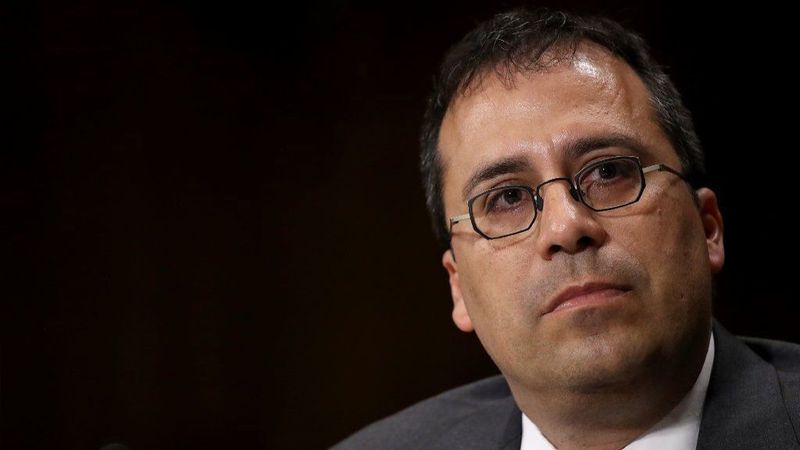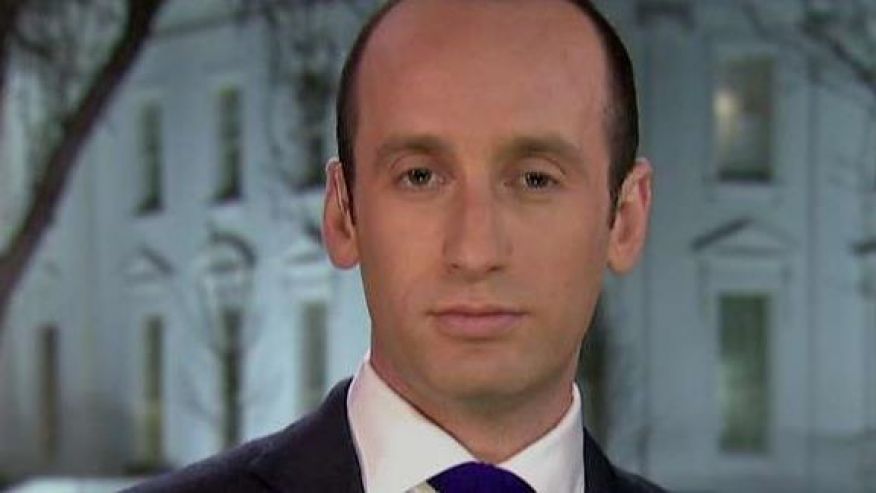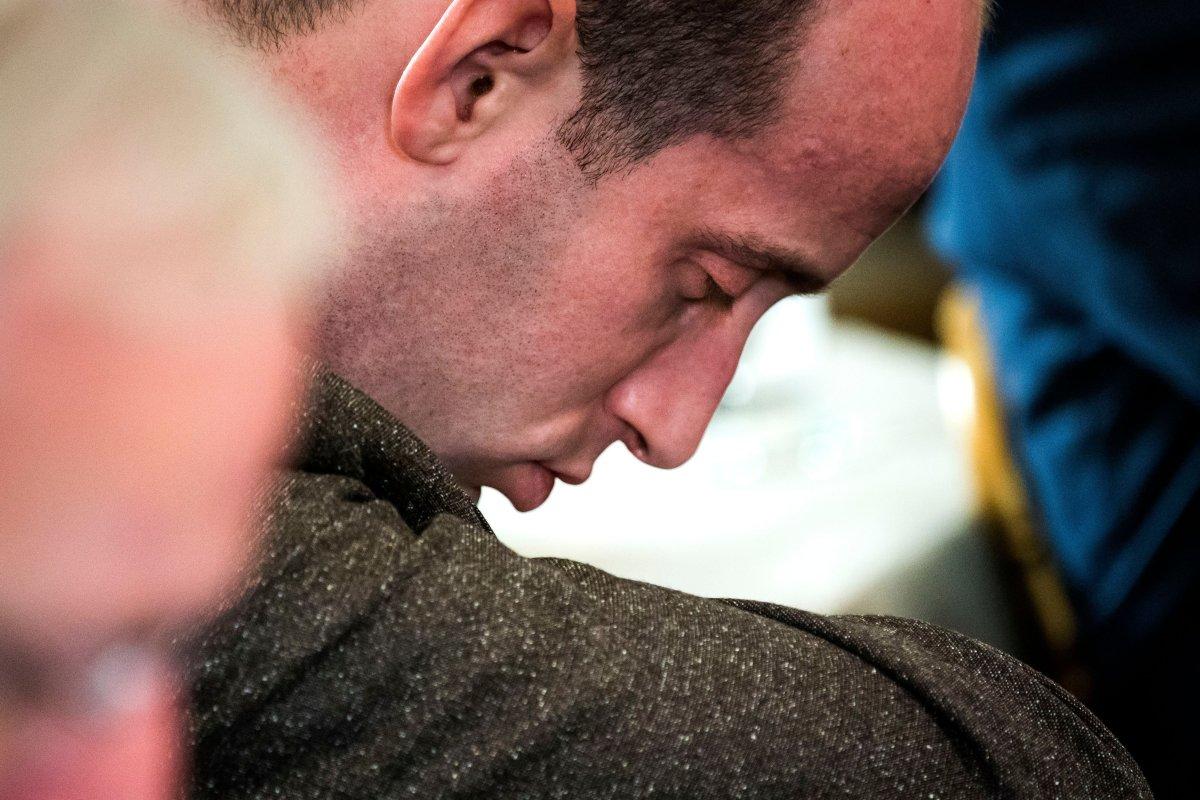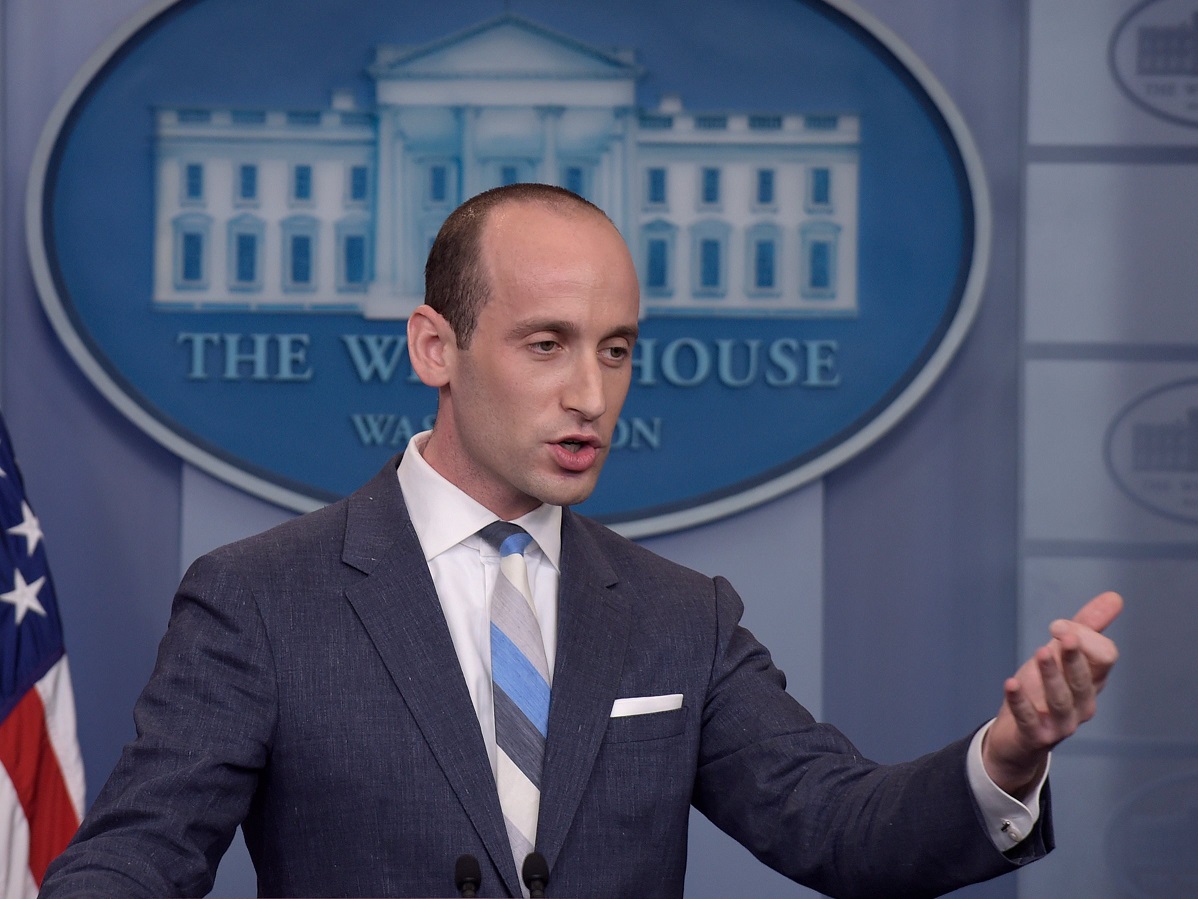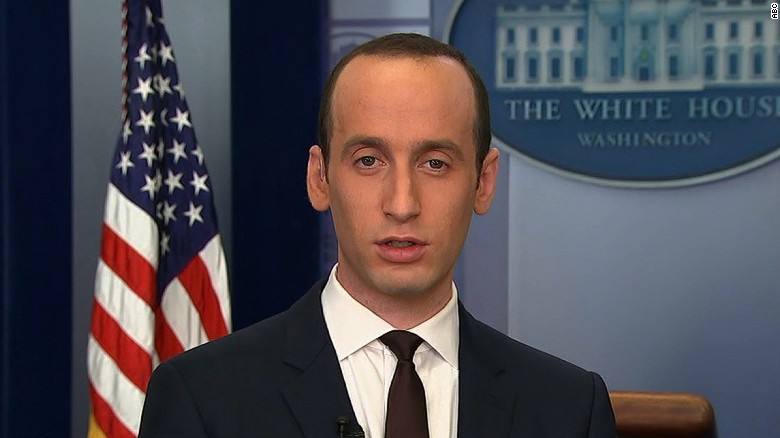Emails show Stephen Miller pressed hard to limit green cards
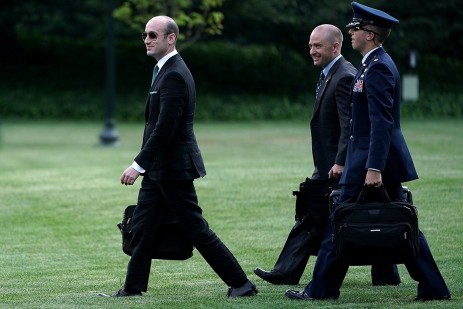
White House senior adviser Stephen Miller wasn’t getting an immigration regulation he wanted. So he sent a series of scorching emails to top immigration officials, calling the department an “embarrassment” for not acting faster, according to emails obtained by POLITICO.
The regulation in question would allow the Department of Homeland Security to bar legal immigrants from obtaining green cards if they receive certain government benefits. The rule will likely be released in the coming days, according to a pair of current and former Trump officials briefed on the timeline.
The emails, which POLITICO obtained through the Freedom of Information Act, shed new light on how aggressively Miller has pressured the Department of Homeland Security to move faster on regulations to limit immigration. Critics say the new rule will be used to shore up Trump’s political base in the coming election year, and that it’s an illegitimate tool to reduce legal immigration.
One former Trump official said Miller has maintained a “singular obsession” with the public charge rule, which he’s argued would bring about a transformative change to U.S. immigration.
At the receiving end of Miller’s pressure campaign was U.S. Citizenship and Immigration Service Director Francis Cissna, an immigration hawk with strong support from restrictionist groups who resigned in May amid a broader Homeland Security Department shakeup that also saw the exit of former Secretary Kirstjen Nielsen and other top officials.
In an email sent on June 8, 2018, Miller lambasted Cissna for the pace of his efforts to implement the public charge rule. “Francis — The timeline on public charge is unacceptable,” Miller wrote. “The public charge reg has been in the works for a year and a half. This is time we don’t have. I don’t care what you need to do to finish it on time. You run an agency of 20,000 people.”
In the message, Miller derided Cissna’s overall performance at USCIS, the agency charged with screening visa applicants and processing immigration paperwork. Cissna was known for his deliberate approach to the regulatory process.
“It’s an embarrassment that we’ve been here for 18 months and USCIS hasn’t published a single major reg,” Miller barked.
According to a version of the rule proposed in October 2018, the regulation would allow federal immigration officials to deny green cards to legal immigrants who’ve received food stamps, welfare, Medicaid, prescription drug subsidies or Section 8 housing vouchers. It could also deny green cards to immigrants deemed likely to receive such government benefits in the future.
With Trump poised to make immigration a centerpiece of his 2020 reelection campaign, a new crackdown on legal immigrants who receive government assistance could energize voters who view immigration — even when done legally — as a fiscal drain and cultural danger.
“This is something that will play well going into the next election, especially considering the prevailing view among the Democratic candidates who are talking about admitting more immigrants and offering more benefits,” said Jessica Vaughan, a director with the Center for Immigration Studies, which pushes for lower levels of both legal and illegal immigration.
But Miller’s previously undisclosed emails could raise legal questions about whether the public charge rule was rushed to completion. The regulatory process will almost certainly be challenged in court, according to opponents bracing for the change.
In addition, the emails could reinvigorate Democratic efforts to compel Miller to testify before Congress. The White House in April denieda voluntary invitation to testify before the House Oversight Committee, which is chaired by Rep. Elijah Cummings (D-Md.). The committee chairman had pressed Miller to explain his role in the development of what he called “troubling” immigration policies.
Acting USCIS Director Ken Cuccinelli — Cissna’s replacement at the agency and another immigration hawk — said the public charge regulation will demonstrate that Trump remains committed to his immigration agenda.
According to a version of the rule proposed in October 2018, the regulation would allow federal immigration officials to deny green cards to legal immigrants who’ve received food stamps, welfare, Medicaid, prescription drug subsidies or Section 8 housing vouchers. It could also deny green cards to immigrants deemed likely to receive such government benefits in the future.
With Trump poised to make immigration a centerpiece of his 2020 reelection campaign, a new crackdown on legal immigrants who receive government assistance could energize voters who view immigration — even when done legally — as a fiscal drain and cultural danger.
“This is something that will play well going into the next election, especially considering the prevailing view among the Democratic candidates who are talking about admitting more immigrants and offering more benefits,” said Jessica Vaughan, a director with the Center for Immigration Studies, which pushes for lower levels of both legal and illegal immigration.
But Miller’s previously undisclosed emails could raise legal questions about whether the public charge rule was rushed to completion. The regulatory process will almost certainly be challenged in court, according to opponents bracing for the change.
In addition, the emails could reinvigorate Democratic efforts to compel Miller to testify before Congress. The White House in April denieda voluntary invitation to testify before the House Oversight Committee, which is chaired by Rep. Elijah Cummings (D-Md.). The committee chairman had pressed Miller to explain his role in the development of what he called “troubling” immigration policies.
Acting USCIS Director Ken Cuccinelli — Cissna’s replacement at the agency and another immigration hawk — said the public charge regulation will demonstrate that Trump remains committed to his immigration agenda.
[Politico]
